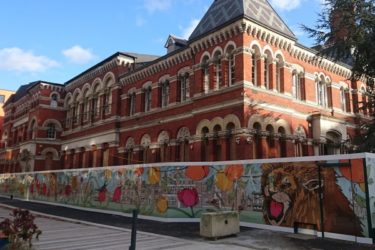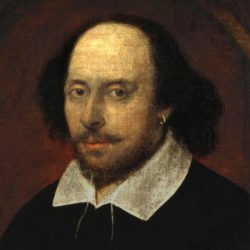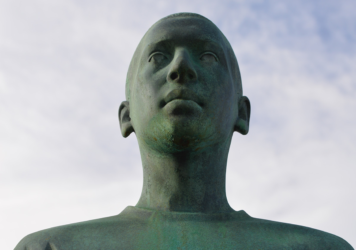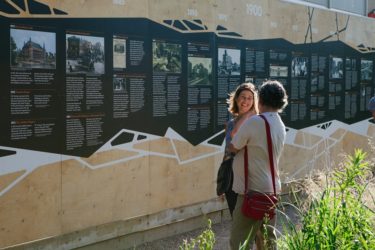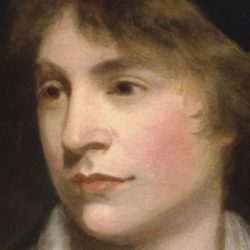The words you are reading were typed on a laptop. The layout of this page was designed on an Apple Mac and you may well be viewing this article on your tablet or mobile phone.
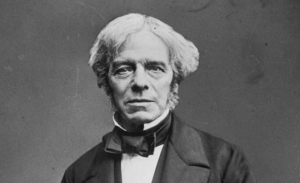
It’s likely that none of this would have been possible were it not for the work of two formidable scientists, both born in Elephant and Castle, just weeks apart, in 1791; Michael Faraday and Charles Babbage.
Babbage was a mathematician who, together with Ada Lovelace, lay the foundations of modern computing by designing the world’s first programmable, computational machine.
Faraday, on the other hand, designed the world’s first electromagnetic generator and established the principles that we still use to generate our electricity, today; the kind supplied to all our homes via the national grid, and which powers our refrigerators, kettles, computers and mobile phones.
Faraday was born in Newington Butts. One of four children, his was a poor family and he received little in the way of formal education. What knowledge and skill he did acquire was almost entirely self-taught.
At the age of 14, he was apprenticed to a bookseller and binder in Marylebone. This fortuitous opportunity gave the precocious young teenager access to hundreds of books on all manner of subjects.
Faraday was born in Newington Butts
Faraday had a keen mind and, over the course of his seven year apprenticeship, he eagerly took advantage of the chance to read widely. The turn of the 19th century was a golden age of scientific discovery and Faraday became particularly interested in the methodology of science, as a whole, as well as the burgeoning fields of chemistry and electricity.
As a young man, Faraday started to attend public lectures at the Royal Institution where he became acquainted with the distinguished chemist, Humphry Davy.
The Royal Institution had been established a decade or so earlier and was one of number of clubs and organisations in London dedicated to sharing ideas and discoveries. Having impressed Davy with the detailed and copious notes taken at his many lectures, Faraday was offered a job as Davy’s assistant in 1813.
Under Davy’s guidance, Faraday experimented with chemistry and studied gasses. He produced new forms of optical glass and even invented a heating device to help with experiments (prefiguring the more famous Bunsen Burner now known to school children everywhere).
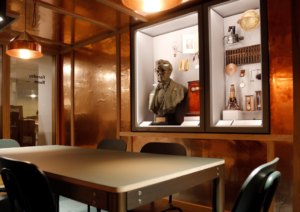
But it was by studying electromagnetism that Faraday made his name.
Electricity was not widely understood at this time and it had often been treated as something of a mysterious novelty rather than as a serious field of study. Nonetheless, this had started to change by the late 1700s, most notably through the work of two Italian scientists; Anastasio Volta and Luigi Galvani.
Using his knowledge of chemistry, Volta had invented the world’s first electrical battery in 1799. Known as the ‘voltaic pile’, it comprised a sandwich of several copper and zinc discs, soaked in brine, and was capable of producing a continuous electric current – much like a modern battery, today.
Meanwhile, Galvani had experimented with electricity to ‘revive’ dead animals (at least to make them twitch and convulse). And in 1803, another Italian, Giovanni Aldini, ‘Galvanised’ the corpse of a deceased criminal at Newgate Prison.
These electrical experiments may well have inspired Mary Shelley (herself, the daughter of another famous Elephant and Castle resident, Mary Wollstonecraft) to write her influential novel, Frankenstein, in which a monster built from dead body parts is brought to life.
Faraday had experimented with making his own voltaic piles, using halfpennies for the discs. And, as an assistant to Davy, who had used voltaic piles to help discover new elements, Faraday would come to learn much more about electricity.
Faraday created the first electric motor
In 1821, inspired by Davy’s attempts to use electromagnetism to create an electric motor, Faraday discovered that he could use a voltaic style battery to rotate a wire around a magnet in a pool of mercury. By generating a continuous, circular, movement – powered by an electrical current – Faraday had created the first electric motor, known as a homopolar motor.
A decade later, and having done much to advance scientific understanding of electricity, Faraday went on to invent the first electrical generator or dynamo. In a way, this device was an electrical motor in reverse. Whereas the motor had created movement from an electrical current, Faraday’s dynamo used motion (the movement of a magnet through a coil of wire) to generate electricity.
This principle, the conversion of motion, via a generator or turbine, into electricity, is still used today.
In 1824 Faraday was elected a member of the Royal Society, a much older and more august scientific organisation than the Royal Institution. And in 1833 he was appointed as the Royal Institution’s Fullerian Professor of Chemistry, the most prestigious of all his roles, having previously served as its Assistant Superintendent and, later, its Director of the Laboratory.
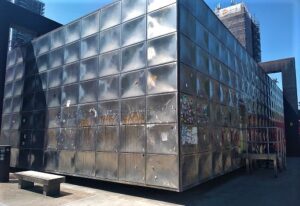
During his time at the Royal Institution, Faraday also inaugurated the famous Christmas Lectures, designed to inspire young people to explore the world of science. He personally delivered 19 of these lectures between 1827 and 1860 and they continue to run to this day, often broadcast by the BBC.
Faraday died in 1867 after a lifetime of scientific endeavour and public service.
Having laid the foundations for so much of what we now take for granted in the modern world, he is remembered and commemorated around the globe. Locally, in addition to a park, school and building at London South Bank University, Faraday is commemorated by the giant steel box in Elephant Square – the Faraday Memorial – which, fittingly, houses an electricity substation for the Tube.
The Faraday Room at the new Southwark Heritage Centre and Walworth Library has a number of items from Faraday’s collection, including a dynamo that he exhibited at the Great Exhibition in 1851.
The room itself is lined in copper, mimicking the effect of a Faraday Cage. It blocks out electromagnetic signals, such as radio transmissions and mobile phone calls, and so it’s the perfect place to quietly contemplate the legacy of Michael Faraday, undisturbed.
